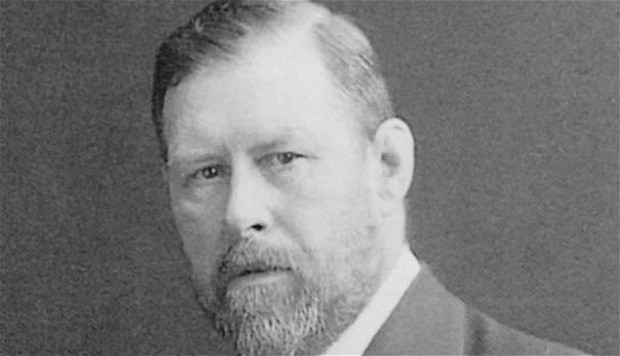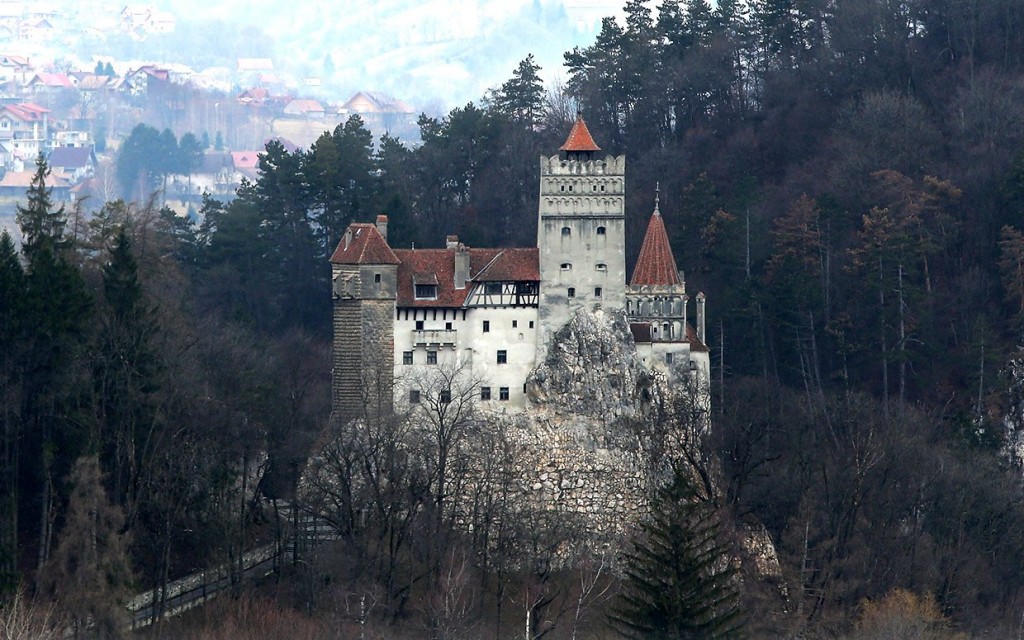 Today is the 118th anniversary of the publication of Dracula, Bram Stoker’s masterpiece (even if it went under-appreciated for years after his death).
Today is the 118th anniversary of the publication of Dracula, Bram Stoker’s masterpiece (even if it went under-appreciated for years after his death).
I would argue that one of the more under-appreciated books of the late 19th-century is Dracula. Not overlooked, mind you–the book was published in 1897 and hasn’t been out of print since. And not unknown. Anyone who’s seen Sesame Street knows about Count Von Count–did you ever notice his fangs? Ever had Count Chocula cereal? Worn those awful wax teeth at Halloween? My point exactly. But how many people know about the man behind all those fangs and capes? Or the man who dreamt him up in the first place…?

Bram Stoker was born in Dublin on November 8, 1847, and spent a good deal of his early childhood confined to his bed with a “mysterious disorder of the blood” (cue menacing laughter). During this time, his mother read him folktales of Ireland, as well as the more popular Gothic authors of the time.
Following his study at Trinity College in Dublin (studying mathematics, surprisingly), Stoker became assistant to Henry Irving, a man he had come to idolize in spite of (or perhaps because of) his over-the-top, flamboyant, demanding personality. Irving, along with being one of the greatest actors of his age, was also, apparently, a bit of a slave driver. He sucked the blood from all those who worked for him…you might say. He was also known for walking around London wearing a long black cloak. He was also tall, with high cheekbones, a large, broad forehead and a hooked nose, and wore his hair swept back off his head. Noticing a similarity here? It appears that even Irving recognized the similarities between himself and Stoker’s fictional count, but apparently, he found it a kind of bizarre compliment.

The book was supposed to be a play. A five act play that Stoker wrote one summer while staying at Whitby. He had done research on Transylvania at the British Library and spent months collecting local stories, superstitions and sea tales from residents of Whitby and from the Captains of the hundreds of ships that sailed into the harbor. When Irving rejected the play, Stoker turned it into a book and…the rest, as they say….was history.
I love Dracula. Unabashedly adore it. From an historian’s point of view, it is one of those books that absolutely defines its era: Dracula was published at a time when the English feared that the the global influence of the British Empire was declining, and falling prey to foreign influences and vices, just like the Count menaces the stalwart crew who pledge to hunt him down. As Dracula himself notes, Vampires are created at the end of empires. Later, Van Helsing himself notes, “Let me tell you, he is known everywhere that men have been…He have follow the wake of the berserker Icelander, the devil-begotten Hun, the Slav, the Saxon, the Magyar.” What could be more terrifying for a British public already aware of the impending end of their Dynasty?
Technology abounds. Dr. Seward records his diary on phonograph cylinders. Mina used shorthand and later a typewriter. They utilize the telegraph and railroads constantly. This is no mythical reality into which these characters are plunked. They are living in the here and now. And yet, a mere few hundred pages later, they are donning garlic and brandishing crosses and taking on all the powers of superstition and heathenism that their century has unequivocally rejected. The book is not so much about the triumph of technology as it is about the fragility of that technology to protect its characters.
And then there is the Count. Seriously, in all the Bela Lugosi nonsense, no one ever gives Stoker enough credit for creating a truly appealing villain. He’s repulsive (the dude has hairy palms. Come on, that’s gross) and at the same time is one of the most compelling and vital characters in the whole book. All the other characters travel on compulsion: Harker goes to Transylvania for work, Mina goes because Jonathan is ill, Van Helsing is ‘compelled’ by his work to go back and forth from Amsterdam. But the Count travels because he wants to.
And he also wants revenge. It’s never specifically mentioned in the book, but it has been postulated that the reason Stoker has Dracula goes for everyone’s female companion is because his wife (the real Dracula’s wife, mind) committed suicide thinking that the Turks had taken the Castle and her husband. Stoker blended fact and fiction to create a man who acts with the strength of history behind him, and the power of myth around him.

And then there’s Mina. Seriously, no one ever gives Mina enough credit. There are piles of papers that discuss Stoker’s use of women in the book and how the concept of ‘The New Woman’ of the late-19th-century is punished through this work, while women in traditional roles are saved. And certainly, in some senses this is true. Lucy, who has three suitors, a disposable income and generally lax morals, is killed quite gruesomely. And Mina, despite her run-in with the Count, survives to marry and have a child. But is it really that simple?
Stoker’s mother was a feminist, and I tend to think some of that wore off in this book. Mina, if you actually look at her, is one feisty little lady. She goes running around in bare feet across town to save her friend, she travels to Hungary alone to help her fiance, and insists on being a full-fledged member of the Fearless Vampire Hunting Party. If anything, Mina is threatened most by the hidebound men around her who insist on maintaining her innocence and refuse to let her in. But it is Mina who finds a way into the Count’s mind, and who listens to his thoughts, giving her friends the chance to catch him. It is she who returns to Romania to find his lair, and, by the end of the book, while the boys are running around with machetes, she’s the one with the gun.
Quite simply, there is no other book like Dracula, and nothing that can quite compare to it. Come find out yourself by checking out a copy today, and look for more recommendations this Thursday in our If/Then post!
